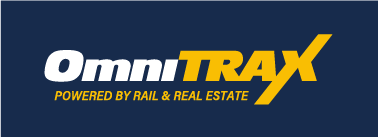What Makes an Optimal Rail-Served Site?
As the transportation industry continues to support evolving supply chains, one of the major trends in industrial real estate is the rise in demand of rail-served sites. In addition to the cost-saving benefits that rail-served sites provide, they are in high demand because of their limited supply. New rail lines are seldomly constructed. When OmniTRAX built its new rail operation (Savannah Industrial Transportation) to service the 2,600-acre Savannah Gateway Industrial Hub operation, it was the first new railroad project in more than 50 years!
As communities consider future industrial development within their finite inventory, it is imperative to identify sites adjacent to existing rail and preserve those for prospective rail service tenants rather than big-box warehouses or data center sites, which can locate on other parcels.
For industrial development projects, the most important capability is availability. A common refrain in the site-selection industry is “no product, no project!” That means that if a community doesn’t have available land that meets the needs of a potential project, there is no chance for the community to land the prospect. No amount of incentives, supply chain efficiencies, or available labor pool can make up for the lack of a viable site.
For rail users, a site that has reliable, dedicated rail service is of utmost importance. Potential users often ask early in the search process about rail service and the ability to bring tracks to a site. There are many factors that make an optimal rail-served site, and there is not a “one size fits all” strategy. Here are a few factors to think about when identifying, assessing, and marketing your rail-served site:
- One of the first things to note when looking at a site next to a rail line is the topography or grade. In the rail world, the flatter the land the better. Most railroaders agree that anything over a two percent grade is problematic. Some topography challenges can be overcome, but it is important to factor in the additional dirt work necessary to deliver the finished product.
- It is extremely important to understand the capabilities of the rail line that is adjacent to your site. Are you on a Class I or short line? Is it a main line or a branch line? Is it in service? In each scenario, the level of density, or amount of volume over that line, varies. It can prove costly and difficult to locate a prospect seeking rail service on a site adjacent to any rail line that sees 50 trains per day. It is imperative that you work with your railroad contact to understand service limitations on the site.
- Most rail conducive prospects are in manufacturing or distribution. As such, a light to heavy industrial zoning designation is usually required on sites that are suitable for rail use. Working with local zoning officials to ensure the appropriate zoning for these types of projects makes for a smoother process.
- Environmental assessments can make or break a project. Identifying existing wetlands and conducting the appropriate phase one environmental, soil, and cultural/historic assessments demonstrates to prospects that you are an experienced, proactive development partner that they can count on.
- It is often easier to aggregate sites in your community available for industrial development. This aggregation often takes the form of industrial parks. There are many types and structures that govern how industrial parks form and operate, but they share a common benefit: providing prospects the peace of mind that comes from knowing that the location has like-minded neighbors and community support for industrial development.
- Industrial parks increase rail efficiency as well. Industrial parks attract a density of rail users in one location, which benefits park tenants and rail operators. Parks enable service options such as drop and pull operations that allow a Class I to drop a set of cars on one track and pull staged cars from another track to optimize main line flow. These types of rail arrangements blend the benefits of local short line service with Class I network reach.
Each of these factors contributes to optimizing rail-served sites that attract new projects, new jobs, and new investments to local communities each year. Each site or region brings specific challenges to consider when preparing your rail property. However, your railroad representative will help you identify the best way to serve prospective rail partners.
OmniTRAX owns or operates multiple industrial parks across the country. Whether it’s repurposing a Kodak facility into a 3,000-acre master-planned industrial park that houses more than a dozen industrial tenants (as we did in Colorado’s Great Western Industrial Park) or developing a new 2,600-acre multi-modal industrial park with optimized port service (as we have done in Georgia’s Savannah Gateway Industrial Hub), optimizing rail-served sites is essential in serving industrial prospects that rely on rail.
There’s one thing that is certain in industrial development: no product equals no project.

